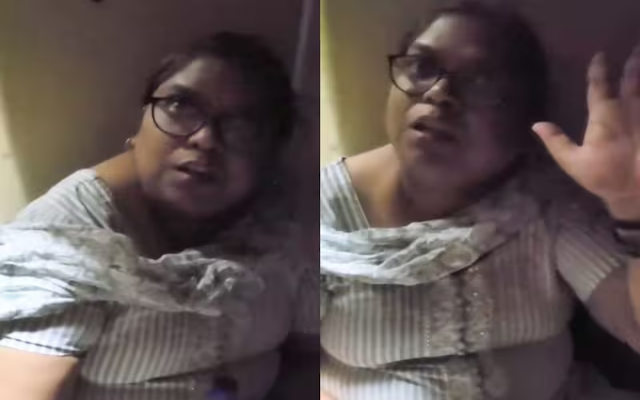Having a basic understanding of CPR and First aid is important if you want to be prepared to deal with an emergency situation.
This is especially true if you are not a medical professional.
How the Professionals Do It
Professional healthcare providers such as nurses, doctors, paramedics, EMTs and other medical staff have a huge responsibility to respond quickly and efficiently in the case of a sudden cardiac arrest.
The key life-saving technique for this situation is cardiopulmonary resuscitation (CPR). Properly trained professionals must be able to recognize the signs of cardiac arrest and properly perform CPR to increase the chances of survival.
CPR is a critical skill for medical professionals, as it is the first line of defense when dealing with a patient who has suffered a sudden cardiac arrest.
When a professional has been trained in CPR, they will know how to assess a patient’s condition and provide immediate care that could save their life. Knowing CPR also helps medical professionals to quickly recognize the signs of a cardiac arrest and intervene with proper care.
Let’s dive deeper into what basic life support is and how important this skill is for amateurs.
Basic Life Support (BLS)
Having a Basic Life Support (BLS) certification is an important step to improving your chances of survival in the event of an emergency.
While many professions don’t require BLS training, it is still a good idea to have it. Whether you are a first responder, a medical professional, or a bystander, having a knowledge of how to provide basic life support can save a life.
In addition to helping you respond to an emergency, obtaining BLS certification is also a good way to show your interest in self development and your willingness to learn.
What is BLS?
Basic life support is a set of medical procedures that can be performed to help keep a person alive until a rescue team can arrive. The procedure focuses on proper circulation and includes chest compressions and other measures.
BLS is also known as cardiopulmonary resuscitation, or CPR, and is one of the most important types of medical care. It can be used to help someone who is suffering from any type of illness or injury. You can use this technique for children, adults, and even babies.
BLS is particularly useful for treating cardiac arrest and other life-threatening medical emergencies.
Many health care professionals, such as medical professionals, emergency medical technicians, and firefighters, need to have a basic understanding of how to provide life support.
Obtaining BLS training can also be a good career move if you want to work in this field. In addition to providing medical care, BLS can also be used to treat choking and other serious illnesses.
In addition to medical professionals, BLS classes can also be useful for lifeguards, childcare workers, restaurant staff, and firefighters. Because it is important to be prepared for all types of emergencies, it is important to have a Basic Life Support certification.
BLS Classes
BLS classes are designed to teach students the skills they need to recognize a life-threatening emergency and respond appropriately. The course includes learning how to recognize the different symptoms of an emergency, clear airways, and stabilize bone fractures.
The course will teach students the use of an automated external defibrillator (AED) and how to locate it. Upon completion, students will receive a certification card.
Basic life support classes can be taken online or in a classroom setting. Online classes are convenient and affordable. They are available at any time, so you don’t have to miss your classes.
They provide the same level of skills as in-person training. You will also have the same AHA BLS Course Completion Card. This certification is valid for two years.
Basic Life Support certification is a good way to show your commitment to your career and your interest in self-development. Many healthcare companies also recommend that their employees undergo training in BLS.
First Aid Classes
Getting first aid training is a good way to improve your chances of survival in an emergency.
In fact, it can save a life. Moreover, it can also improve the outcome of a serious illness. In addition, it can prevent long-term disability.
First aid is a broad topic, but fortunately, it can be applied to a variety of situations. It may include preventing bleeding, treating a heat-related illness, preventing hypothermia, or managing a broken bone. In addition, it can be applied to minor injuries such as cuts and burns.
First aid training is also helpful if you are a caregiver. It can be useful in many other situations, such as managing an anxiety attack, managing a seizure, or managing a breathing problem. In fact, first aid can even help to prevent a long-term disability.
The most important part of first aid is preventing further injury. One of the most important parts of first aid is recognising different types of injuries. It also teaches you how to move injured people around during emergencies. It also shows you the most important thing to do in a first-aid situation, which is to avoid shock.
A first aid course teaches you a variety of other skills, including how to recognize the ocular and oral signs of a heart attack, how to treat an unconscious person, how to prevent bleeding, how to manage hypothermia, and how to respond to heat-related illnesses. The most important of these is how to stay calm.
First aid training is a good way to ensure that the medical staff arrives at an emergency with a complete medical history. It can also make it faster for the medical team to arrive at the scene.
Infant CPR
Taking an infant CPR class can be one of the best things you can do for your own baby.
Not only will you learn how to save your baby’s life, you will also learn how to manage any emergencies that might arise. Whether you have a baby at home, work with children, or are a babysitter, you should know what to do if your child starts coughing in an odd way or choking.
Infant CPR is similar to the CPR used for older children. It consists of two main steps:
- Compressions
- Breaths
The Process
First, check your baby’s breathing. If the baby is not breathing, make sure the airway is open, the nostrils are closed, and the baby is lying on a flat surface.
You should be able to see your child’s chest rise and fall with each breath. If you cannot, you will need to call for help. You should then begin infant CPR by giving your child five inch-and-a-half deep chest compressions.
Next, you should remove the object from the baby’s mouth. This can be done with a finger if the object is visible. You can also do this with a piece of cloth.
You will also need to give the baby a good, long breath.
When the infant is still unresponsive, you should perform five sets of chest compressions and two breaths. You will need to keep the baby on a level surface and be careful to avoid pressing too hard on the lungs.
You can use the heel of your hand to do these chest compressions. The other hand should support the baby’s head and jaw. If you are a single rescuer, you should use two fingers to do the compressions.
You should also remove the clothes from the infant’s chest. You could not be able to see your child’s eyes, but you should be able to hear the baby’s breathing. If your child does not respond to this, you should continue to perform infant CPR until help arrives.
You can also get your baby’s attention by calling their name. This will tell him that you are trying to help him and will get his attention within a few seconds if things are going well.
Takeaway
Learning basic CPR is important for everyone whether or not they are a medical professional. Knowing even the most rudimentary skills can help save someone’s life in an emergency situation. Taking the time to learn these skills can make the difference between life and death in an emergency, so it is critical that people take the time to familiarize themselves with CPR.
Even the most basic skill sets can help to make a difference in an emergency situation, so it is important for everyone to take the time to learn the basics of CPR. It could be the difference between life and death for someone you love or even yourself.



















